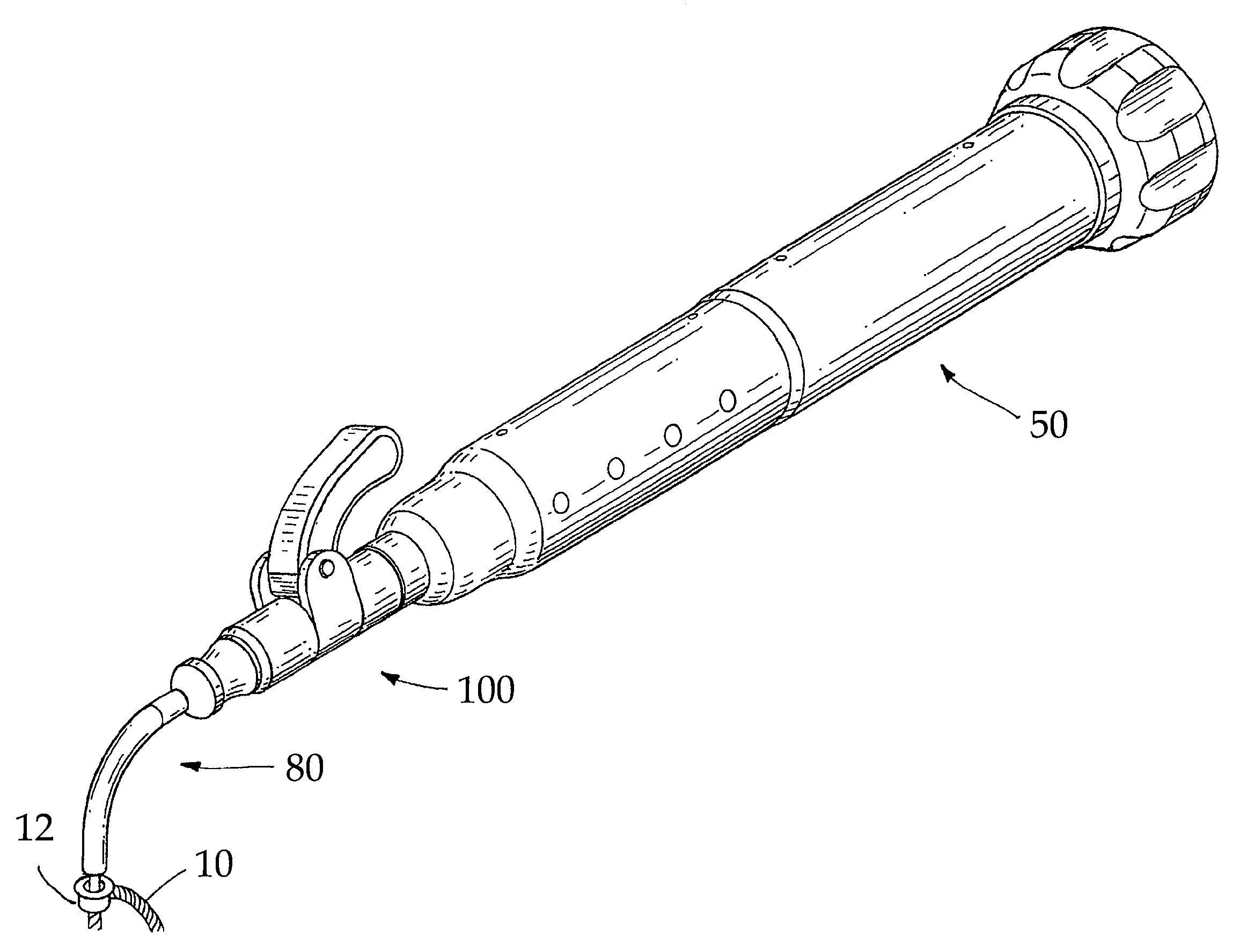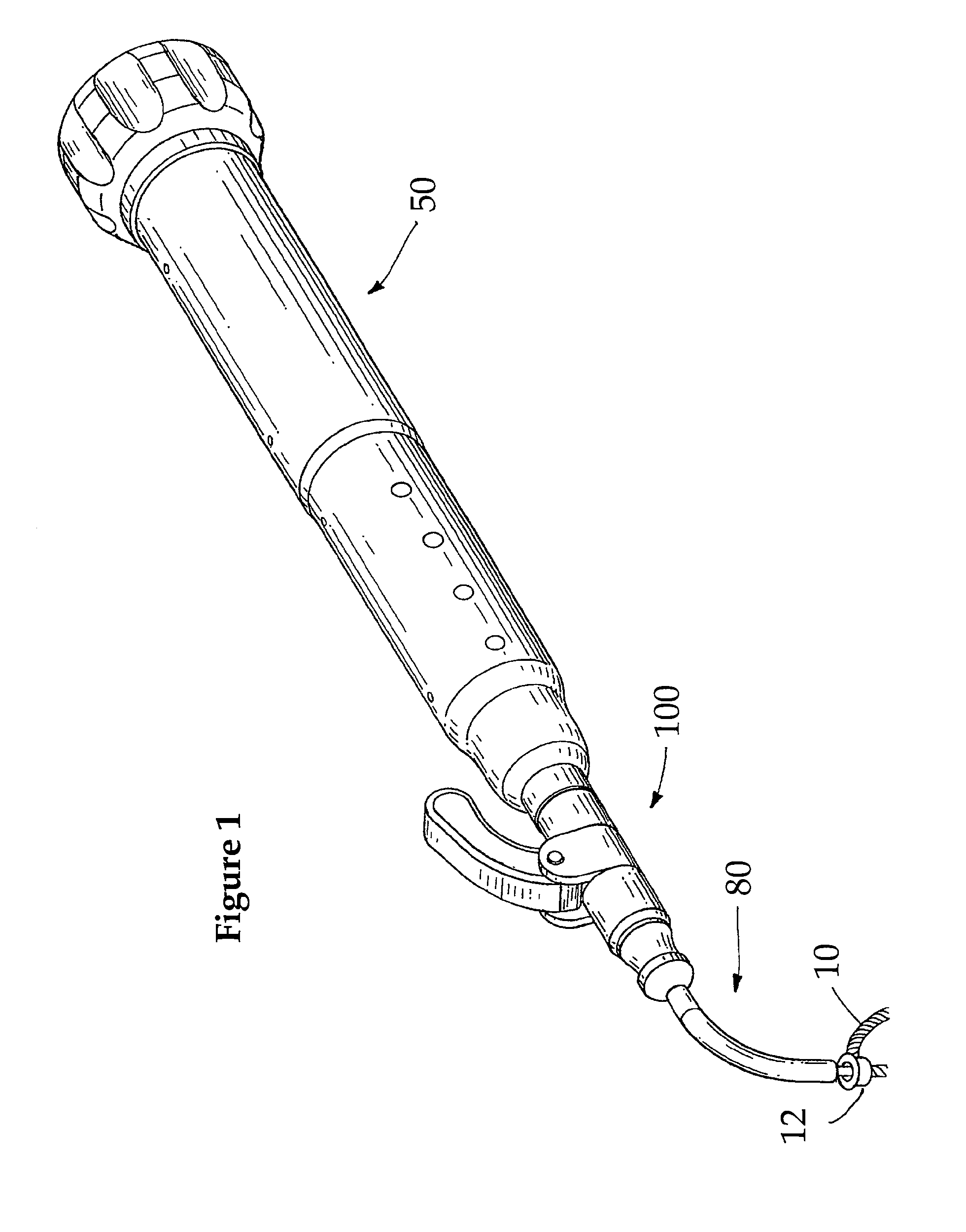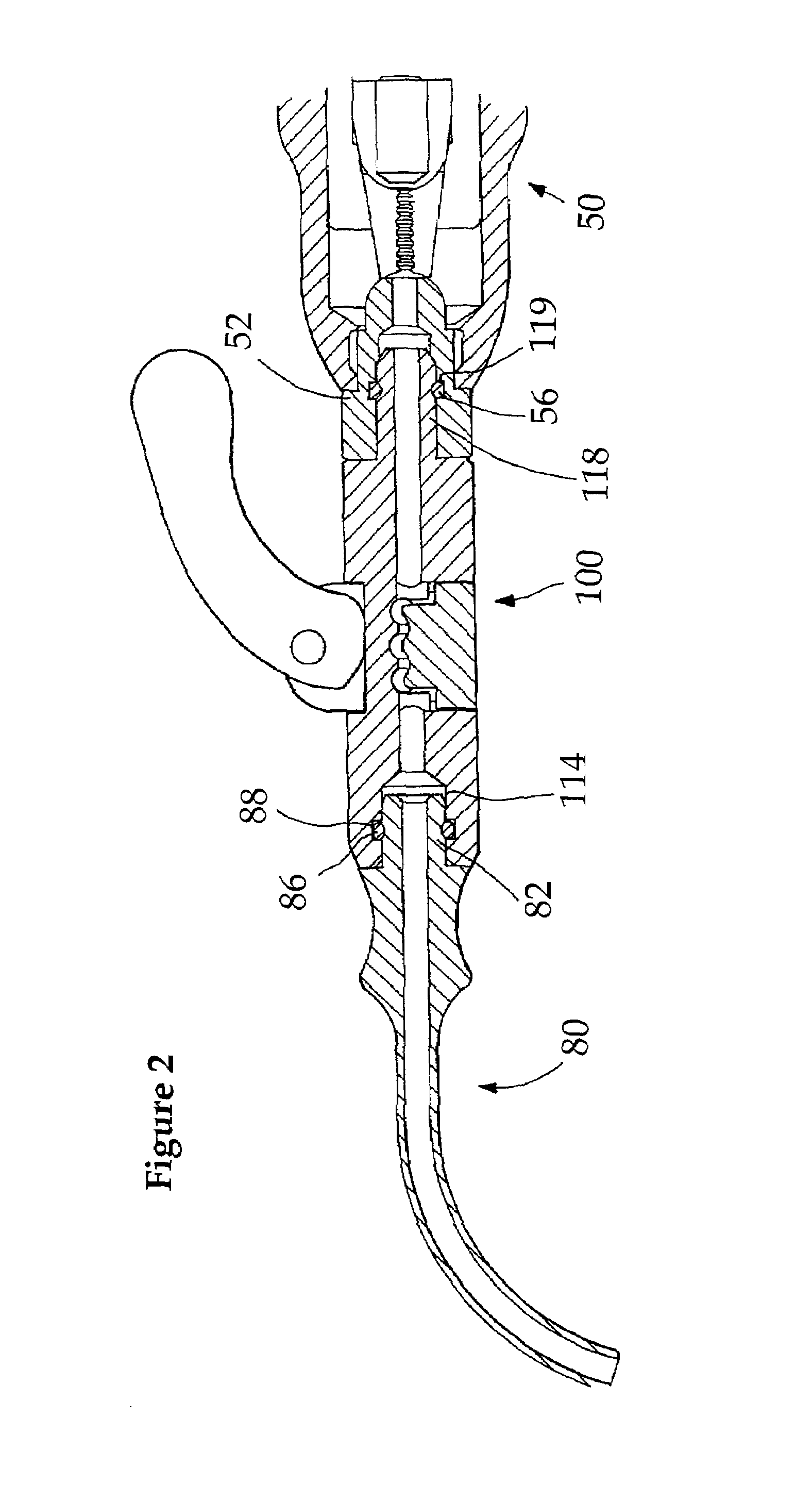Method and apparatus for clamping surgical wires or cables
a surgical wire or cable technology, applied in the field of surgical methods and apparatus for clamping cables or wires, can solve the problems of reducing the clamp reducing the clamping efficiency of the device, so as to improve the clamping ability of the device
- Summary
- Abstract
- Description
- Claims
- Application Information
AI Technical Summary
Benefits of technology
Problems solved by technology
Method used
Image
Examples
Embodiment Construction
[0025]FIG. 1 illustrates an exemplary cable clamp 100 according to a preferred embodiment of the invention illustrated as part of a larger assembly that includes a tensioning tool 50 and a cable guide assembly 80. Although the invention will be described with reference to an exemplary cable clamp, it is not intended to be limited to devices for clamping cables, but is intended to encompass devices for clamping wires and other elongate members. Tensioning tool 50 provides a mechanism for applying a measured tension to cable 10, which extends through a “top hat” crimp 12 to form a loop for orthopedic fastening. As is known in the art, one end of the cable 10 is secured around the outside of the crimp and the other end extends through a bore in the crimp, through cable guide assembly 80, through a bore in cable clamp 100 and into the tensioning tool where it is gripped by a mechanism, the details of which are not important for an understanding of the invention.
[0026]Cable guide assembl...
PUM
 Login to View More
Login to View More Abstract
Description
Claims
Application Information
 Login to View More
Login to View More - R&D
- Intellectual Property
- Life Sciences
- Materials
- Tech Scout
- Unparalleled Data Quality
- Higher Quality Content
- 60% Fewer Hallucinations
Browse by: Latest US Patents, China's latest patents, Technical Efficacy Thesaurus, Application Domain, Technology Topic, Popular Technical Reports.
© 2025 PatSnap. All rights reserved.Legal|Privacy policy|Modern Slavery Act Transparency Statement|Sitemap|About US| Contact US: help@patsnap.com



